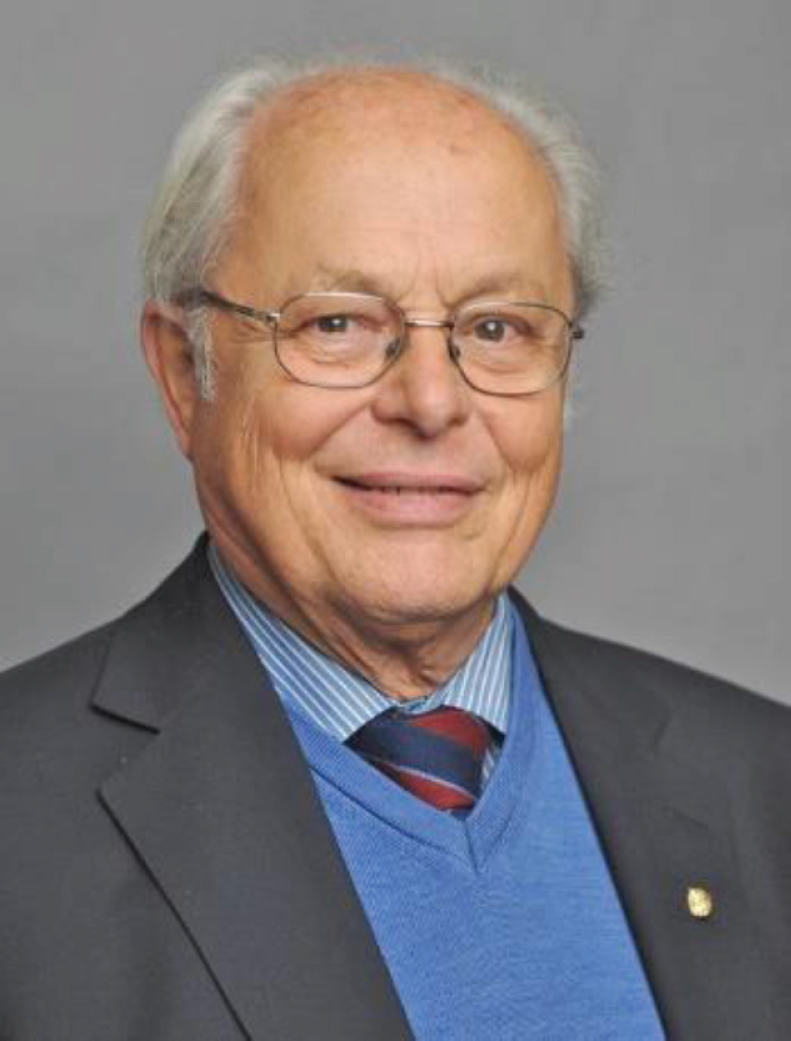Thomas Foltynie, MD, PhD, Heiko Braak, MD, and Kelly Del Tredici, MD, PhD, recipients of the Parkinson Prize 2020
The Journal of Parkinson’s Disease is proud to announce the two articles that have won the first Parkinson Prize, recognizing these outstanding contributions to the advancement to Parkinson’s disease research. Recipients of the award are lead investigator Thomas Foltynie, MD, PhD (research article) and co-authors Heiko Braak, MD, and Kelly Del Tredici, MD, PhD (review article).
The winning papers are:
Aviles-Olmos I, Dickson, J, Kefalopoulou, Z, Djamshidian, A, Kahan, J, Ell, P, Whitton, P, Wyse, R, Isaacs, T, Lees, A, Limousin, P, Foltynie, T (2014) Motor and Cognitive Advantages Persist 12 Months After Exenatide Exposure in Parkinson’s Disease. J Parkinsons Dis, 4, 337-344.
Braak, H, Del Tredici, K (2017) Neuropathological Staging of Brain Pathology in Sporadic Parkinson’s disease: Separating the Wheat from the Chaff. J Parkinsons Dis, 7, S71-S85.
These papers were selected by members of the Journal of Parkinson’s Disease’s Editorial Board from among 461 research articles and 153 review articles published between the journal’s launch in 2011 and 2019. Awardees will receive a commemorative plaque and a cash award of $1,000 (per article). The Parkinson Prize will continue as an annual award and in 2021 an article published in 2020 will be selected.
“The entire Editorial Board is delighted to formally recognize these important contributions to the literature on Parkinson’s disease, and is honored to have the opportunity to publish such significant work in the Journal of Parkinson’s Disease,” state Editors-in-Chief Patrik Brundin, MD, PhD, and Bastiaan Bloem, MD, PhD.
IMPORTANCE OF THE WORK
The Foltynie study adds confidence that the potential beneficial effects of exenatide for the treatment of Parkinson’s disease may be related to more than transient symptomatic benefits. The trial participants who used exenatide for one year as part of the investigators’ first trial were reviewed a year after stopping exenatide, and their “off dopaminergic medication” video assessments remained improved compared to participants who were randomly assigned to thecontrol group.
“We have learned that careful long-term follow-up can be hugely instructive and have embraced the long-term follow up strategy in the evaluation of exenatide in our current phase 3 trial. My co-investigators and I are very honored that the Journal of Parkinson’s Disease has chosen to recognize this article in this way,” commented Prof. Foltynie.
Prof. Braak and Dr. Del Tredici review the development and rationale for the six-stage staging model they proposed for brain pathology related to sporadic Parkinson’s disease (Neurobiol Aging 2003) and ensuing controversies. This staging model continues to fuel discussions as well as new hypotheses and new experimental models pertaining to the pathogenesis and pathomechanisms of Parkinson’s disease.
“Neuropathological staging of protein misfolding disorders helps to provide insight into the regional distribution of pathology, its potential systemic spread or propagation along neuroanatomical connectivities, and the selective vulnerability of specific types of neuronal and non-neuronal cells, whereby the prion-like concept of the synucleinopathy and the theory of selective vulnerability in Parkinson’s disease are by no means mutually exclusive,” explained Prof. Braak and Dr. Del Tredici. “We would like to thank the Journal of Parkinson’s Disease Editorial Board members for their recognition of our work.
2020 PARKINSON PRIZE RECIPIENTS

Tom Foltynie, MD, PhD, is Professor of Neurology in the Department of Clinical and Movement Neurosciences, UCL Institute of Neurology and Consultant Neurologist at the National Hospital for Neurology and Neurosurgery, Queen Square, London. He is responsible for movement disorder patients, particularly Parkinson’s disease patients, undergoing advanced treatments such as deep brain stimulation, apomorphine, and duodopa. He is chief investigator for a series of trials of exenatide, a potential neurorestorative treatment for Parkinson’s disease, as well as the lead clinician at UCL for trials of alpha synuclein antibody treatment for Parkinson’s disease and Oxford BioMedica/Axovant’s gene therapy product for Parkinson’s disease, and the Transeuro Parkinson’s disease cell transplantation program.
Prof. Foltynie trained in medicine at UCL. After qualifying in 1995, he worked in Addenbrooke’s Hospital in Cambridge. From 1999 to 2003, he undertook his PhD in Cambridge looking at the heterogeneity of Parkinson’s disease, describing differences in cognitive abilities between patients under the influence of various genes including COMT and BDNF, and Tau. He finished his neurology training between Addenbrooke’s Hospital, Cambridge and the National Hospital for Neurology and Neurosurgery in London, before taking up his consultant clinical academic position in London in 2008. He was promoted to Professor in 2016.

A native of Kiel, Heiko Braak, MD, completed medical school at the University of Kiel, receiving his doctorate in 1964. After the habilitation in anatomy (1970), he became Professor of Anatomy in Kiel (1974). As Visiting Professor of Neurology at Harvard Medical School (1978), he worked with Prof. Norman Geschwind and published the monograph Architectonics of the Human Telencephalic Cortex (1980). He directed the Institute for Clinical Neuroanatomy, Dr. Senckenberg Anatomical Institute at Goethe University Frankfurt/Main (1980-2002). After retiring from university teaching, he was appointed Guest Researcher (2002-2009) at the Anatomical Institute until moving to Ulm University (2009), where he is Senior Professor and co-group leader of the Section Clinical Neuroanatomy (Department of Neurology, Center for BiomedicalResearch).
Prof. Braak is a member of the German Academy of Sciences Leopoldina (Halle/Saale) and the 2014 recipient of the Robert A. Pritzker Prize for Leadership in Parkinson’s disease Research (Michael J. Fox Foundation). In 2018, he was awarded the Federal Republic of Germany’s Great Order of Merit. His research interests include neurodegeneration, Alzheimer’s disease, Parkinson’s disease, amyotrophic lateral sclerosis, and pathoarchitectonics of the human cerebral cortex. He was married to Prof. Eva Braak until her death in 2000 and is now married to Kelly Del Tredici.

A native of San Francisco, Kelly Del Tredici, MD, PhD, came to Germany on a Frederick Sheldon Traveling Fellowship from Harvard University (1989) after studying at Loyola University of Chicago and Fordham University. She completed medical school at the Goethe University Frankfurt/Main, receiving her doctorate in anatomy there in 2004. Following medical residency at the Clinic for Psychiatry and Neurology in Winnenden (near Stuttgart), she became a postdoctoral fellow at the Dr. Senckenberg Anatomical Institute (Institute for Clinical Neuroanatomy, Goethe University) in 2006. She moved to Ulm University (2009), where she is co-group leader of the Section Clinical Neuroanatomy (Department of Neurology, Center for Biomedical Research). She is a member of Phi Beta Kappa. Her research interests include neuroanatomy, neurodegeneration, Parkinson’s disease, Alzheimer’s disease, and amyotrophic lateral sclerosis. Kelly Del Tredici is married to Heiko Braak.
Runners up for the Parkinson Prize were:
BEST RESEARCH PAPER
2. Polinski NK, Volpicelli-Daley LA, Sortwell CE, et al. Best Practices for Generating and Using Alpha-Synuclein Pre-Formed Fibrils to Model Parkinson’s Disease in Rodents. J Parkinsons Dis. 2018;8(2):303-322. doi:10.3233/JPD-171248
3. Khoo SK, Petillo D, Kang UJ, et al. Plasma-based circulating MicroRNA biomarkers for Parkinson’s disease. J Parkinsons Dis. 2012;2(4):321-331. doi:10.3233/JPD-012144
4. Whone AL, Boca M, Luz M, et al. Extended Treatment with Glial Cell Line-Derived Neurotrophic Factor in Parkinson’s Disease. J Parkinsons Dis. 2019;9(2):301-313. doi:10.3233/JPD-191576
5. Pagan F, Hebron M, Valadez EH, et al. Nilotinib Effects in Parkinson’s disease and Dementia with Lewy bodies. J Parkinsons Dis. 2016;6(3):503-517. doi:10.3233/JPD-160867
BEST REVIEW PAPER
2. Burré J. The Synaptic Function of α-Synuclein. J Parkinsons Dis. 2015;5(4):699-713. doi:10.3233/JPD-150642
3. Dorsey ER, Sherer T, Okun MS, Bloem BR. The Emerging Evidence of the Parkinson Pandemic. J Parkinsons Dis. 2018;8(s1):S3-S8. doi:10.3233/JPD-181474
4. Kannarkat GT, Boss JM, Tansey MG. The role of innate and adaptive immunity in Parkinson’s disease. J Parkinsons Dis. 2013;3(4):493-514. doi:10.3233/JPD-130250
5. Dias V, Junn E, Mouradian MM. The role of oxidative stress in Parkinson’s disease. J Parkinsons Dis. 2013;3(4):461-491. doi:10.3233/JPD-130230
The Journal of Parkinson’s Disease is proud to host such high-quality work, and acknowledges the excellent contributions by these authors and all those who were in the running.
REFERENCES
[1] | Aviles-Olmos I , Dickson J , Kefalopoulou Z , et al. ((2014) ) Motor and cognitive advantages persist 12 months after exenatide exposure in Parkinson’s disease. J Parkinsons Dis 4: (3), 337–344. |
[2] | Braak H , Del Tredici K ((2017) ) Neuropathological Staging of Brain Pathology in Sporadic Parkinson’s disease: Separating the Wheat from the Chaff. J Parkinsons Dis 7: (s1), S71–S85. |
[3] | Burré J ((2015) ) The Synaptic Function of α-Synuclein. J Parkinsons Dis 5: (4), 699–713. |
[4] | Dorsey ER , Sherer T , Okun MS , Bloem BR ((2018) ) The Emerging Evidence of the Parkinson Pandemic. J Parkinsons Dis 8: (s1), S3–S8. |
[5] | Kannarkat GT , Boss JM , Tansey MG ((2013) ) The role of innate and adaptive immunity in Parkinson’s disease. J Parkinsons Dis 3: (4), 493–514. |
[6] | Dias V , Junn E , Mouradian MM ((2013) ) The role of oxidative stress in Parkinson’s disease. J Parkinsons Dis 3: (4), 461–491. |
[7] | Polinski NK , Volpicelli-Daley LA , Sortwell CE , et al. ((2018) ) Best Practices for Generating and Using Alpha-Synuclein Pre-Formed Fibrils to Model Parkinson’s Disease in Rodents. J Parkinsons Dis 8: (2), 303–322. |
[8] | Khoo SK , Petillo D , Kang UJ , et al. ((2012) ) Plasma-based circulating MicroRNA biomarkers for Parkinson’s disease. J Parkinsons Dis 2: (4), 321–331. |
[9] | Whone AL , Boca M , Luz M , et al. ((2019) ) Extended Treatment with Glial Cell Line-Derived Neurotrophic Factor in Parkinson’s Disease. J Parkinsons Dis 9: (2), 301–313. |
[10] | Pagan F , Hebron M , Valadez EH , et al. ((2016) ) Nilotinib Effects in Parkinson’s disease and Dementia with Lewy bodies. J Parkinsons Dis 6: (3), 503–517. |




